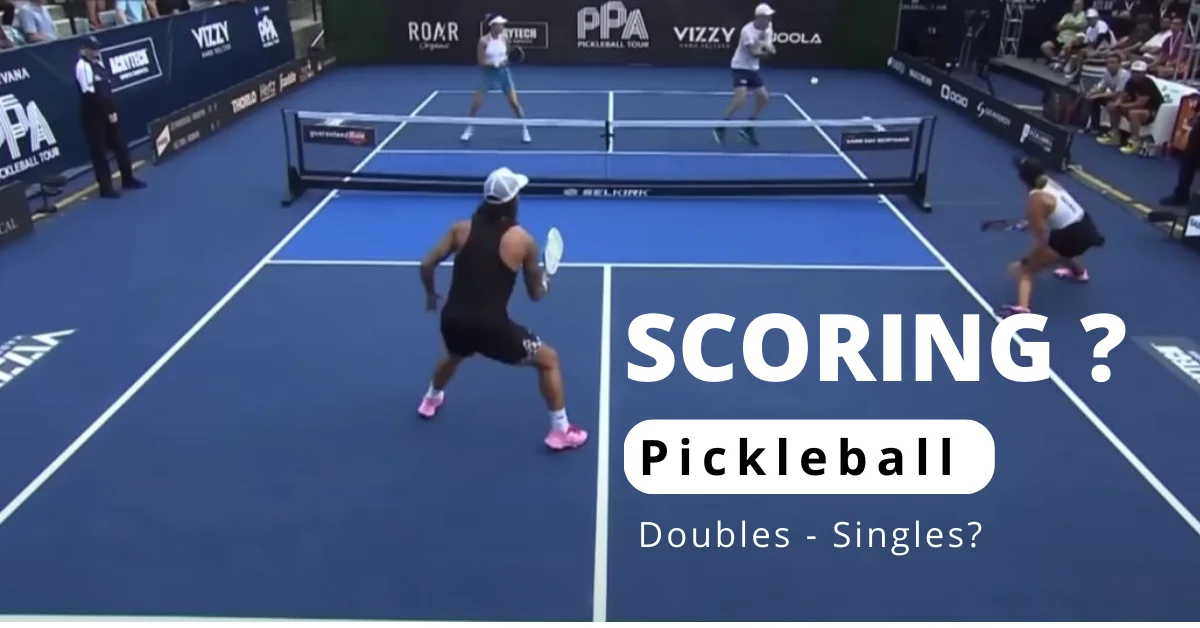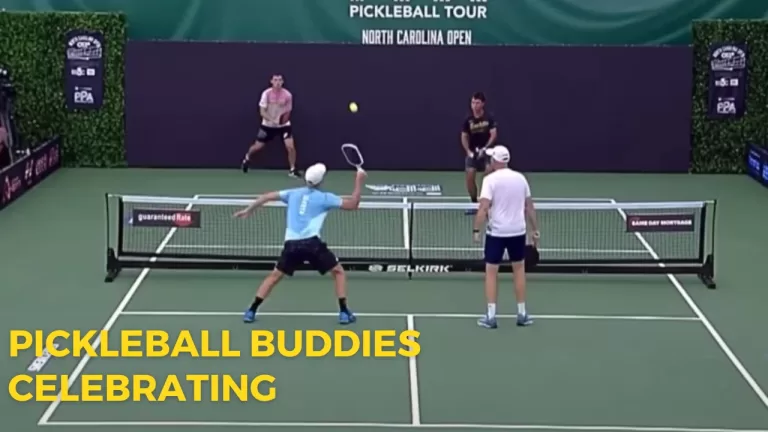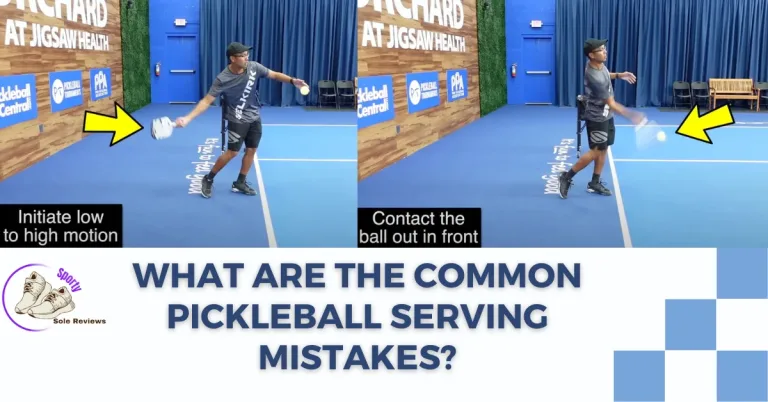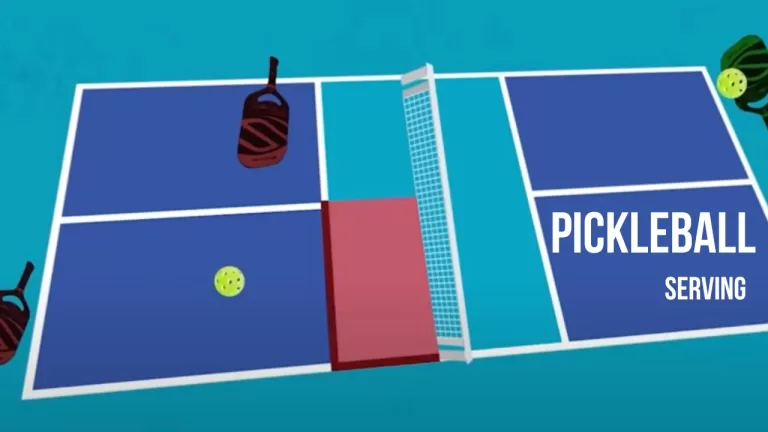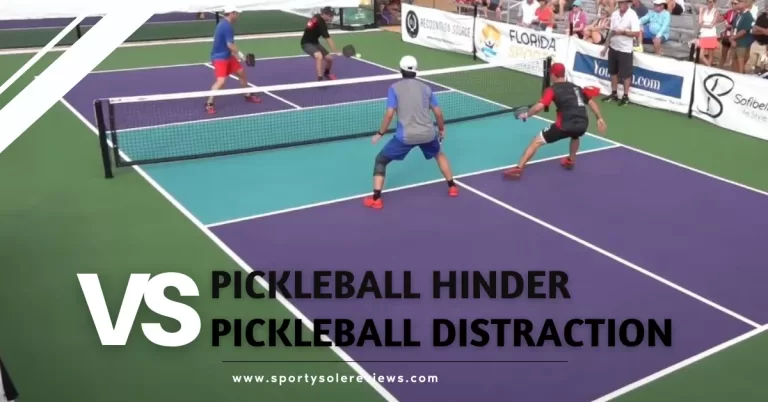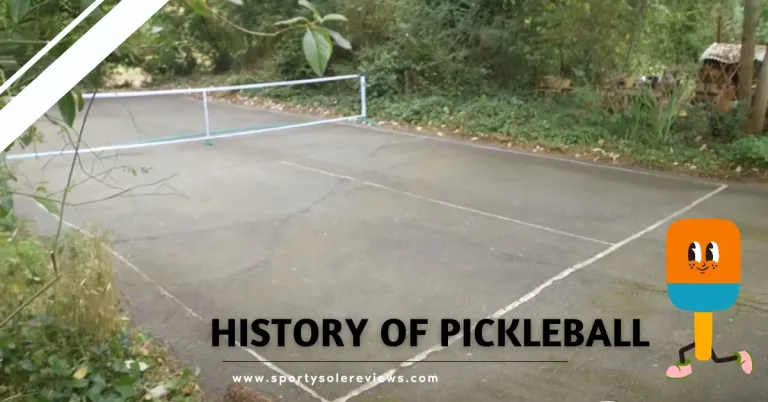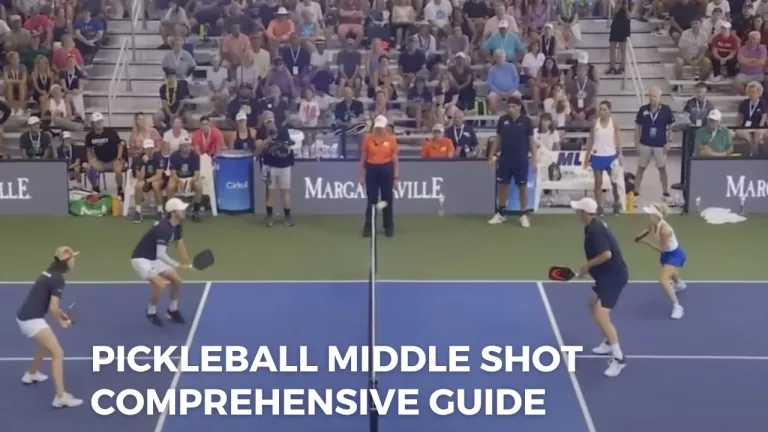Crack the Code on Pickleball Scoring, Doubles, Singles, Positions, and Killer Strategies!
In pickleball, scoring is based on rallies won by teams or players. Each time a team successfully wins a rally, they earn a point. The first team to reach 11 points (with a two-point lead) wins the game. However, in some cases, games can be played up to 15 or 21 points, depending on the agreed-upon rules.
In this post i introduce the rules, strategies, and positions involved in pickleball scoring, whether you’re playing doubles or singles.
Scoring in Doubles Pickleball
In doubles pickleball, the scoring system follows the same principles as singles play. Each team aims to win rallies and earn points to reach the designated score, typically 11 or 15 points. The serving team initiates the rally, and if they win the rally, they score a point. The receiving team then assumes the serving position and attempts to score points in return.
What are the specific rules for doubles scoring?
In doubles pickleball, the serving rotation is slightly different from singles play. The serving team alternates between the two partners on the serving side. The first server begins on the right side of the court, serving the ball diagonally to the opponent’s service court. After winning a rally and earning a point, the serving team rotates, and the next server takes their turn. This rotation ensures fairness and equal opportunities among all players.
Furthermore, the non-volley zone rules still apply in doubles play. Each player must be mindful of their positioning and avoid stepping into the non-volley zone while hitting volleys. Violating this rule results in a point for the opposing team.
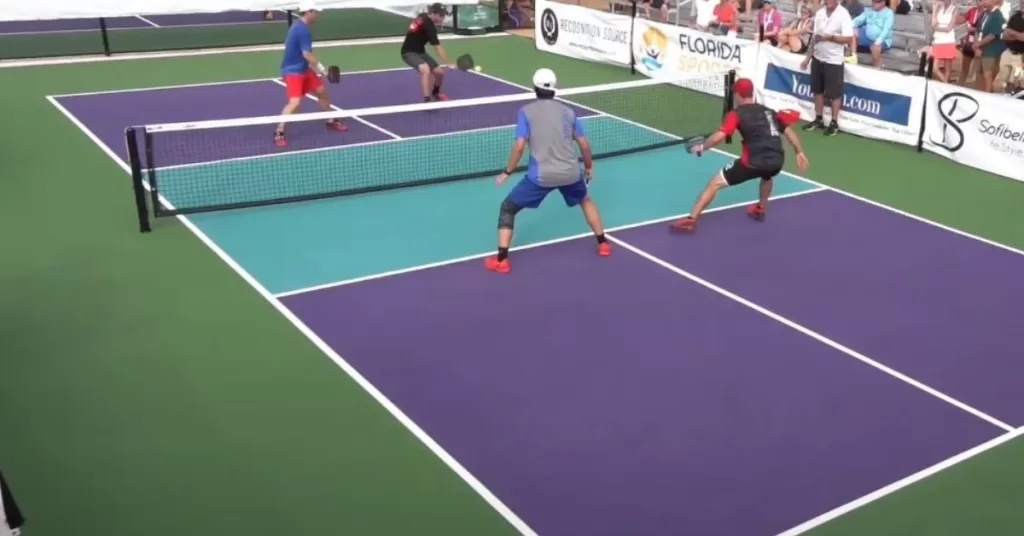
How do partners coordinate their scoring strategies?
In doubles pickleball, effective communication and coordination between partners are crucial for successful scoring. Partners need to strategize and work together to exploit their opponents’ weaknesses and create scoring opportunities. Here are a few ways partners coordinate their scoring strategies:
- Serving Placement: Partners can discuss and plan where to serve the ball to put pressure on their opponents. They may aim for a weak return or target specific areas of the court to gain an advantage.
- Court Coverage: Partners need to establish clear roles and responsibilities for covering the court. They should communicate and coordinate their movements to ensure optimal coverage, minimizing gaps that opponents can exploit.
- Shot Selection: Partners can develop strategies for shot selection based on their individual strengths and their opponents’ weaknesses. By communicating and anticipating each other’s moves, they can execute well-placed shots that maximize their chances of scoring.
Scoring in Singles Pickleball
In singles pickleball, the scoring system is the same as in doubles play, with the objective of winning rallies to earn points. However, the key difference lies in the designated score to win the game. While doubles games typically require the first team to reach 11 or 15 points, singles games are often played to 15 or 21 points, allowing for a longer and more challenging match.
What are the key differences in scoring rules for singles play?
The scoring rules in singles pickleball remain largely the same as in doubles play. The serving team initiates the rally by serving the ball diagonally to the opponent’s service court. If the serving team wins the rally, they earn a point. However, there are a few notable differences:
- Serving Side: In singles play, the server serves from the right-hand side of the court for the first point of each game. After the first point, the server alternates between the right and left sides of the court for subsequent serves.
- Non-Volley Zone: The non-volley zone or kitchen rules remain the same in singles play. Players must avoid stepping into the non-volley zone while hitting volleys. Violating this rule results in a point for the opponent.
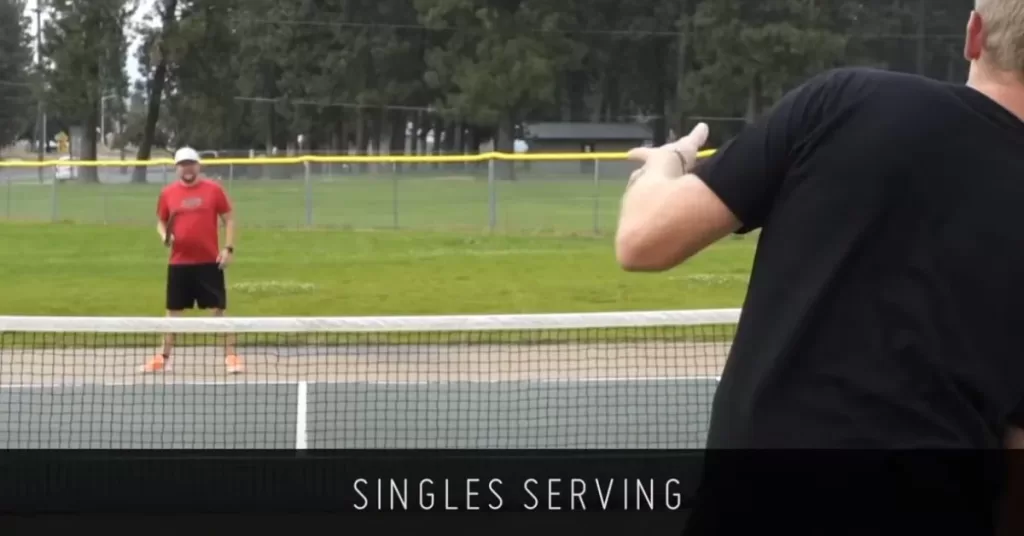
How does strategy change in singles scoring?
Singles pickleball requires players to adjust their strategies compared to doubles play. With no partner to rely on, players must cover the entire court themselves and make strategic decisions accordingly. Here are a few ways strategy changes in singles scoring:
- Court Coverage: In singles play, players must cover the entire court, which means they need to be quick and agile to reach all areas. They should prioritize positioning to anticipate their opponent’s shots and cover the court effectively.
- Shot Selection: Singles players often focus on strategic shot placement rather than relying solely on power. They aim to place shots near the sidelines or deep into the corners to make it harder for their opponent to return the ball effectively.
- Movement and Footwork: Agility and footwork play a crucial role in singles pickleball. Players need to be able to move quickly, change directions, and recover effectively to reach shots across the court.
Positions and Roles in Pickleball Scoring
Pickleball is a dynamic sport that requires players to understand their positions and roles on the court. I explore the different positions in pickleball, how players rotate positions during a match, and the responsibilities of each position in scoring.
What are the different positions in pickleball?
In pickleball, the court is divided into two sides: the right side and the left side. Each side has two positions, creating a total of four positions on the court. The positions are as follows:
- Server: The server initiates the rally by serving the ball to the opponent’s service court. They start the game from the right side of the court and alternate between the right and left sides for subsequent serves.
- Receiver: The receiver stands on the opposite side of the net, positioned to receive the serve from the server. They aim to return the serve effectively and initiate rallies.
- Forecourt Player: The forecourt player is positioned closer to the net, near the non-volley zone or “kitchen.” They primarily focus on volleys and quick reactions to put pressure on the opponents and control the front of the court.
- Midcourt Player: The midcourt player stands between the forecourt and the baseline. They have a versatile role, covering shots that come their way and providing support both at the net and from the back of the court.
How do players rotate positions during a match?
Position rotation in pickleball occurs when the serving team wins a rally and earns a point. After winning a point, the serving team rotates positions in a specific pattern. The player who served the ball moves to the non-volley zone on their side, and their partner moves to the serving position on the opposite side. The receiver becomes the forecourt player, and the forecourt player becomes the midcourt player.
This rotation ensures that players have equal opportunities to serve and play different positions throughout the match. It also allows for a fair distribution of responsibilities and keeps the game dynamic.
What are the responsibilities of each position in scoring?
Each position in pickleball has specific responsibilities that contribute to scoring points and winning matches. Here’s a breakdown of the responsibilities for each position:
- Server: The server’s primary responsibility is to start the rally by serving the ball accurately and with enough power to make it challenging for the receiver to return. They aim to initiate the point in a favorable position for their team.
- Receiver: The receiver’s responsibility is to effectively return the serve and initiate rallies. They need to anticipate the serve and react quickly, aiming to place the ball strategically to gain an advantage in the rally.
- Forecourt Player: The forecourt player’s role is to control the non-volley zone and put pressure on the opponents. They focus on volleys, quick reactions, and maintaining a strong presence at the net. Their goal is to set up opportunities for their team to score points.
- Midcourt Player: The midcourt player has a versatile role, covering shots that come their way and providing support both at the net and from the back of the court. They need to be adaptable, ready to transition between offense and defense, and strategically position themselves to cover a wide range of shots.
General Scoring Strategies in Pickleball
- Placement and Control: One of the key strategies in pickleball scoring is to focus on ball placement and control. By aiming to place shots in areas where opponents are less likely to return them effectively, players can force errors and create scoring opportunities. This involves hitting shots deep, towards the sidelines, and at angles that make it challenging for opponents to reach and return the ball.
- Attacking the Non-Volley Zone: The non-volley zone or “kitchen” is a crucial area in pickleball. Effective scoring strategies involve attacking this zone by hitting controlled, low volleys or drop shots. By forcing opponents to hit volleys from the non-volley zone, players can capitalize on weak returns and gain an advantage in the rally.
- Communication and Teamwork: Pickleball is often played in doubles, requiring effective communication and teamwork. Scoring strategies involve coordinating with your partner to strategically position yourselves on the court, cover shots, and exploit weaknesses in the opponents’ game. Clear communication and understanding each other’s roles can lead to successful scoring opportunities.
Maximizing Scoring Opportunities
- Capitalizing on Weak Returns: To maximize scoring opportunities, players should be alert and ready to capitalize on weak returns from their opponents. This requires quick reflexes, anticipation, and the ability to react swiftly to take advantage of any openings. Players should be prepared to attack and put pressure on weak shots to gain points.
- Exploiting Opponents’ Weaknesses: Observing and identifying opponents’ weaknesses is crucial for maximizing scoring opportunities. Players should analyze their opponents’ playing style, shot preferences, and areas where they may be vulnerable. By targeting these weaknesses and adapting their strategies accordingly, players can create scoring opportunities and gain an upper hand in the match.
Advanced Scoring Tactics to Outsmart Opponents
- Dinking: Dinking is a technique that involves hitting soft, controlled shots over the net to force opponents into making mistakes or opening up opportunities for stronger shots. Advanced players use dinking strategically to disrupt opponents’ rhythm and set up scoring opportunities.
- Third Shot Drop: The third shot drop is a tactical shot used after the serve and return. It aims to hit a soft shot that lands in the non-volley zone, forcing opponents to hit an upward shot from a disadvantageous position. This tactic can lead to weak returns, allowing players to seize control of the rally and score points.
- Misdirection and Shot Variation: Another advanced scoring tactic is to use misdirection and shot variation. By disguising shots and mixing up the placement, speed, and spin of the ball, players can confuse opponents and create openings for scoring. This involves using deceptive shots, unexpected angles, and changing the pace of the game to keep opponents off balance.
Conclusion
In conclusion, mastering effective scoring strategies in pickleball can significantly enhance a player’s performance on the court. By focusing on ball placement, attacking the non-volley zone, and employing teamwork and communication, players can create scoring opportunities and gain an advantage. Additionally, maximizing scoring opportunities through capitalizing on weak returns and exploiting opponents’ weaknesses can lead to success. Advanced tactics like dinking, third shot drops, and shot variation can further outsmart opponents. Remember:
- Placement and control are key.
- Attack the non-volley zone.
- Communicate and work as a team.
- Capitalize on weak returns.
- Exploit opponents’ weaknesses.
- Use advanced tactics strategically.
Is pickleball scoring similar to tennis scoring?
No, pickleball scoring is different from tennis scoring. In pickleball, only the serving team can score points, and games are typically played to 11 or 15 points, depending on the agreed-upon rules.
How does the scoring system in pickleball work?
In pickleball, points can only be scored by the serving team. If the serving team wins a rally, they earn a point and continue serving. If the receiving team wins a rally, they gain the serve but do not score a point. Games are typically played to 11 or 15 points, with a two-point advantage to win.
Can you score points when your opponent hits the ball out of bounds?
No, if your opponent hits the ball out of bounds, you do not score a point. In pickleball, points can only be scored by the serving team when they win a rally.
Do you lose points if you make a fault during serving?
Yes, if you commit a fault during serving, such as stepping on or beyond the baseline, hitting the ball into the net, or hitting the ball out of bounds, you lose your serve, and the opposing team gains the serve. However, you do not lose any points for faults.
Is there a tiebreaker in pickleball scoring?
Yes, in the event of a tie, a tiebreaker is played. The tiebreaker is typically played to 7 points, and the team that reaches 7 points first with a two-point advantage wins the game.

